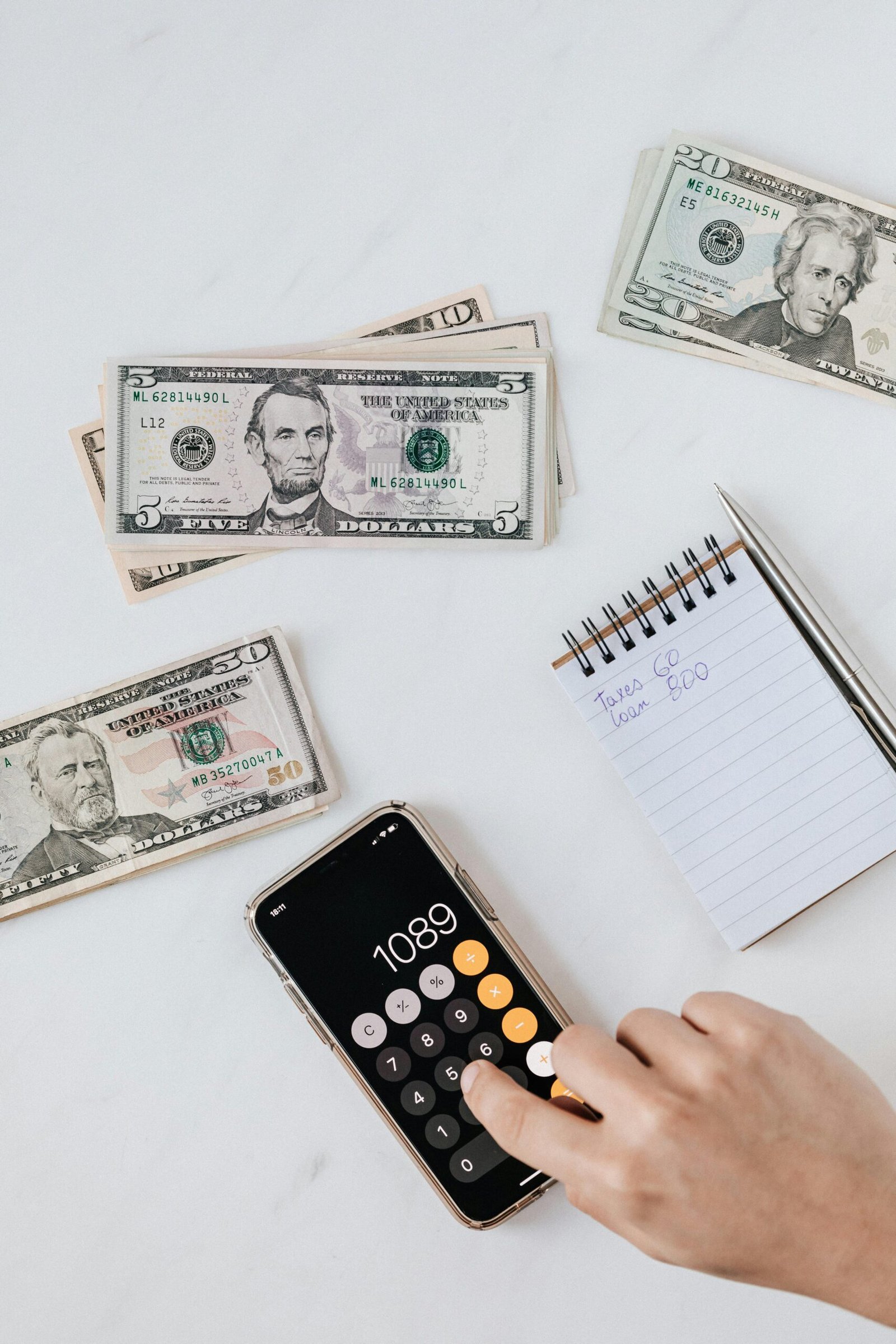In today’s fast-paced world, managing your finances can be overwhelming. With bills, savings, investments, and everyday spending, it’s easy to lose track of where your money is going. Fortunately, personal finance apps can simplify the process by helping you track expenses, set budgets, invest wisely, and even improve your credit score. As we approach 2025, there are many innovative apps available to help you take control of your financial health.
Here’s a rundown of the top personal finance apps to consider in 2025 to stay on top of your money, reduce stress, and achieve your financial goals.
1. Mint: A Comprehensive Budgeting Tool
Mint has been a leading personal finance app for years, and it continues to be a reliable option for users who want to manage their budgets, track spending, and monitor bills. This app automatically connects to your bank accounts, credit cards, and other financial institutions, providing a real-time view of your financial situation.
Key Features:
- Budget Tracking: Mint automatically categorizes your transactions, allowing you to set and track your spending limits.
- Bill Payment Reminders: Get notifications to ensure you never miss a bill.
- Free Credit Score: Track your credit score for free, with tips for improving it.
Why It’s Great: Mint’s easy-to-use interface and integration with various financial accounts make it a one-stop shop for managing your finances and staying organized.
Tip: Mint is free to use, but it does offer some premium features that can enhance your financial insights.
2. YNAB (You Need a Budget): A Goal-Oriented Budgeting App
YNAB is designed for those who want to go beyond basic budgeting and start building savings and financial goals. YNAB’s philosophy is rooted in giving every dollar a job and focusing on long-term financial success. This app is ideal for individuals looking to develop a strict budgeting habit.
Key Features:
- Goal-Oriented Budgeting: YNAB helps you set specific savings goals and track your progress toward them.
- Real-Time Expense Tracking: Connect your bank accounts to track and categorize spending in real time.
- Educational Resources: YNAB offers comprehensive financial education tools and workshops to help you become a more savvy spender and saver.
Why It’s Great: YNAB’s proactive approach to budgeting and its educational content make it a strong option for individuals serious about financial planning.
Tip: YNAB comes with a 34-day free trial, after which you’ll need to subscribe. If you’re committed to budgeting, the monthly cost may be worth the investment.
3. Personal Capital: Track Investments and Net Worth
Personal Capital is a financial tool that goes beyond budgeting by helping you track your investments, retirement accounts, and net worth. It’s especially useful for individuals who want to manage both their spending and their investment portfolios in one place.
Key Features:
- Investment Tracking: Link your investment accounts to track their performance and review your portfolio.
- Retirement Planning Tools: Personal Capital offers retirement planning calculators and insights to help you build wealth for the future.
- Net Worth Tracker: See a comprehensive view of your assets and liabilities to understand your overall financial health.
Why It’s Great: Personal Capital is perfect for those who want to focus on wealth building and retirement planning while keeping an eye on their day-to-day spending.
Tip: Personal Capital’s basic features are free, but there’s also a wealth management service with a fee for those who want personalized financial advice.
4. PocketGuard: Simplify Your Spending
PocketGuard is a budgeting app that simplifies expense tracking by telling you how much “pocket money” you have available after accounting for bills, savings, and goals. The app’s main feature is its “In My Pocket” tracker, which shows how much you can safely spend without overstepping your budget.
Key Features:
- Automated Bill Tracking: PocketGuard links to your accounts and automatically tracks recurring bills.
- Savings Goals: Set savings targets, and the app will help you allocate money toward those goals.
- Easy-to-Use Interface: The app is straightforward, making it ideal for users who want a simple budgeting tool without complex features.
Why It’s Great: PocketGuard’s simplicity makes it an excellent choice for users who want to manage spending without getting bogged down by complicated budget settings.
Tip: PocketGuard offers both free and premium versions, with the premium version providing additional features like better categorization and advanced reports.
5. Acorns: Invest Small Change Automatically
Acorns is an innovative investment app designed to help users save and invest by rounding up everyday purchases to the nearest dollar and investing the spare change. It’s an ideal app for beginners or anyone looking for an effortless way to start investing without having to actively manage their investments.
Key Features:
- Round-Ups: Acorns automatically rounds up your purchases and invests the change in a diversified portfolio.
- Automated Investments: You can set recurring deposits to regularly invest a small amount of money.
- Retirement Accounts: Acorns also offers individual retirement accounts (IRAs) for long-term investing.
Why It’s Great: Acorns makes it easy for users to dip their toes into investing by automating the process, making investing feel effortless and accessible.
Tip: Acorns charges a monthly fee, so it may be best for users who are committed to investing regularly, even if it’s just small amounts.
6. Credit Karma: Track Your Credit Score and Financial Health
Credit Karma has become a well-known app for free credit score monitoring and financial advice. It offers users access to their credit scores from both TransUnion and Equifax, along with personalized recommendations for improving credit health.
Key Features:
- Free Credit Score: Get your credit score updated regularly and track changes over time.
- Financial Recommendations: Credit Karma suggests credit cards, loans, and other financial products based on your credit profile.
- Credit Report Monitoring: Credit Karma alerts you to any changes in your credit report, helping you catch potential identity theft early.
Why It’s Great: Credit Karma is a great tool for improving and maintaining your credit score, with no cost for monitoring and alerts.
Tip: Credit Karma also offers free tax filing services, adding another benefit to this all-in-one financial app.
7. Tally: Automate Credit Card Payments
Tally is an app designed to help you manage credit card payments efficiently. It automatically pays your credit card bills based on your payment due dates, helping you avoid late fees and manage your balances better. The app also offers a line of credit to simplify payments.
Key Features:
- Automatic Payments: Tally makes credit card payments for you on time, avoiding late fees and interest charges.
- Balance Management: The app helps you organize multiple credit card balances and prioritizes paying down higher-interest debt.
- Credit Line: Tally offers a line of credit to help consolidate your debt and lower your monthly payments.
Why It’s Great: Tally is perfect for users who have multiple credit card payments to keep track of and want a simpler way to manage them without worrying about due dates.
Tip: Tally charges a fee for its line of credit, so ensure the interest savings outweigh the costs before using this feature.
8. GoodBudget: Envelope Budgeting Made Easy
GoodBudget is a modern version of the classic envelope budgeting system, where you allocate a specific amount of money to different spending categories. It’s a great option for people who prefer a hands-on approach to budgeting while keeping things simple and easy to track.
Key Features:
- Digital Envelope System: Allocate money to different categories (e.g., groceries, entertainment, bills) and track your spending in real time.
- Sync Across Devices: GoodBudget allows you to sync your envelopes across multiple devices, so you can track your budget on the go.
- Debt Tracking: You can also use GoodBudget to track your debts and allocate payments toward reducing them.
Why It’s Great: GoodBudget is easy to use and offers a simple yet effective way to manage spending without needing access to your bank accounts.
Tip: GoodBudget offers both free and paid versions, with the paid version providing more envelopes and advanced features.
9. Simple: A Budgeting App with a Sleek Interface
Simple is a modern budgeting app that provides users with an intuitive platform for managing their money, setting goals, and tracking spending. The app offers a simple yet elegant way to monitor your finances and reach financial goals.
Key Features:
- Goal Setting: Set financial goals and track progress toward achieving them.
- Automatic Categorization: Simple automatically categorizes your transactions, making it easier to monitor spending.
- No Hidden Fees: Simple offers transparent pricing and doesn’t charge any maintenance fees.
Why It’s Great: Simple’s sleek design and user-friendly interface make it a great option for users who want a hassle-free, visually appealing budgeting app.
Tip: While Simple is free to use, it is being phased out in favor of new offerings under the BBVA brand. Make sure to check for any updates or changes.
10. Stash: Invest and Build Wealth with Ease
Stash is an app that makes investing easy for beginners. It allows you to start with as little as $5, offering fractional shares of stocks, bonds, and ETFs. Stash also provides guidance on choosing investments and building a diversified portfolio.
Key Features:
- Fractional Shares: Invest in fractional shares, which allows you to start with a small amount of money.
- Personalized Investment Guidance: Stash offers educational resources and personalized advice to help you understand your investments.
- Retirement Accounts: Stash also offers options to invest in IRAs, helping you save for retirement.
Why It’s Great: Stash is ideal for people who want to start investing but may not have the capital to buy full shares of stocks. It’s user-friendly and provides resources for beginners.
Tip: Stash offers a subscription fee, but the educational tools and guidance can be valuable for beginner investors.
Conclusion: Choosing the Right Finance App for 2025
Managing your money effectively is more accessible than ever with the wide range of personal finance apps available. Whether you’re looking to budget, save, invest, or improve your credit score, there’s an app for nearly every financial need. Consider your goals and preferences when choosing the right app for you, and remember that staying on top of your finances requires consistent effort and planning.
With the right tools, you can take control of your money in 2025 and set yourself up for a secure financial future.
5 Unique FAQs
- Are personal finance apps safe to use?
Yes, most personal finance apps use encryption to protect your data, but always ensure you’re using reputable apps from trusted providers. - Can I use multiple personal finance apps at once?
Absolutely! Many users find that using multiple apps for budgeting, saving, and investing can help them manage their finances more effectively. - Do personal finance apps charge fees?
Some apps are free, while others offer premium features for a fee. Always check the terms before signing up. - Which app is best for beginners who want to start investing?
Apps like Stash or Acorns are great for beginners, as they allow you to start investing with small amounts and offer educational resources. - Can I use these apps to manage business finances?
Most of these apps are designed for personal use, but some, like Mint and Personal Capital, can also be helpful for managing small business finances.




